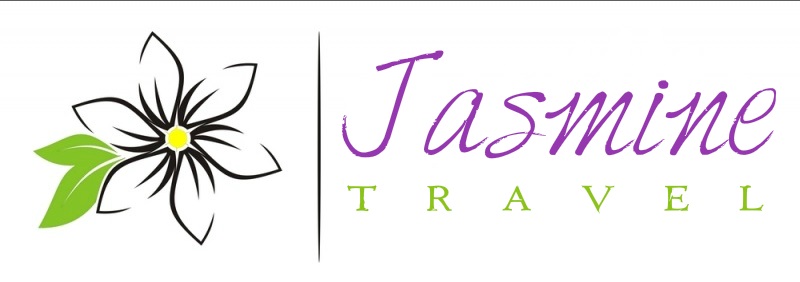A majority of the population, 81.6%, belonged to the peasant order. The Orthodox hierarchy was suspicious of education they saw no religious need for literacy whatsoever. [109] The distinctly liberal notion of "progress" was replaced by a conservative notion of modernization based on the incorporation of modern technology to serve the established system. Its wide variety of functions were carried out by the different departments into which it was divided. This measure, which was endorsed by the third Duma in an act passed on 21 December 1908, was calculated to have far-reaching and profound effects on the rural economy of Russia. If we find the surname of your ancestors in the index but it turns out that their coat of arms was included in parts 11-14, we will be able to look for this coat of arms in Fond 1411 (The Section of Coat of Arms of the Heraldry Department of the Ruling Senate) of the Russian State Historic Archives. [37] By 1812, Russia had occupied many territories in Eastern Europe, holding some of Eastern Galicia from Austria and Bessarabia from the Ottoman Empire;[38] from Northern Europe, it had ceded Finland from the war against weaken Sweden; it also possessed some territory in Caucasus. First and only census carried out in the Russian Empire. These slaves were heavily taxed, making them the poorest in any Russians. Following the Swedish defeat in the Finnish War of 18081809 and the signing of the Treaty of Fredrikshamn on 17 September 1809, the eastern half of Sweden, the area that then became Finland, was incorporated into the Russian Empire as an autonomous grand duchy. By 1800, the level of literacy among male peasants ranged from 1 to 12 percent and from 20 to 25 percent for urban men. Local nobles, merchants, and entrepreneurs imagined a future of promoting their regional interests, from "locality" to "empire". The Russian masses were so furious over the massacre that a general strike was declared, which demanded a democratic republic. The eagle bears a red shield on its breast depicting a silver horseman in a blue cape, mounted upon a silver horse and slaying a black dragon with a silver spear.". It combined their previously separate coats of arms : Coat of arms of Poland, the White Eagle Coat of arms of the Russian Empire, the double-headed eagle The principal ecclesiastical authority of the Russian Churchwhich extended its jurisdiction over the entire territory of the Empire, including the ex-Kingdom of Kartli-Kakhetiwas the Most Holy Synod, the civilian Over Procurator of the Holy Synod being one of the council of ministers with wide de facto powers in ecclesiastical matters. "Language and power in the late Ottoman Empire" (Chapter 7). Both lines served the commercial and strategic needs of the empire, and facilitated migration.[123]. She contributed to the resurgence of the Russian nobility that began after the death of Peter the Great, abolishing State service and granting them control of most state functions in the provinces. Alexander II decided to abolish serfdom from above, with ample provision for the landowners, rather than wait for it to be abolished from below by revolution. In 1889, a Russian adventurer, Nikolay Ivanovitch Achinov, tried to establish a Russian colony in Africa, Sagallo, situated on the Gulf of Tadjoura in present-day Djibouti. In 1893, district committees for the management of the peasants' affairs, similar to those in purely Russian governments, were introduced into this part of the Empire. Peter continued and intensified his predecessors' requirement of state service from all nobles, in the Table of Ranks. [70], Defeat in the Russo-Japanese War (19041905) was a major blow to the tsarist regime and further increased the potential for unrest. Finally got around to finishing my CoA in a stained glass style. The other main Russian coat of arms, the image of St George slaying the dragon, is contemporaneous. The deep indentations of the Gulfs of Bothnia and Finland were surrounded by what is ethnically Finnish territory, and it is only at the very head of the latter gulf that the Russians had taken firm foothold by erecting their capital at the mouth of the Neva River. In the western provinces, where the land was more cheaply valued and the allotments somewhat increased after the Polish insurrection, the situation was better. In order to repress further revolts, censorship was intensified, including the constant surveillance of schools and universities. ", "From Byzantium to present-day Russia, the double-headed eagle still soars", The Code of Principal Laws of the Russian Empire ( , 1906), https://en.wikipedia.org/w/index.php?title=Coat_of_arms_of_Russia&oldid=1132032002, Articles needing additional references from November 2011, All articles needing additional references, Articles needing translation from Russian Wikipedia, Short description is different from Wikidata, Articles with unsourced statements from July 2008, Articles with unsourced statements from September 2021, Articles containing Russian-language text, Articles with Russian-language sources (ru), Creative Commons Attribution-ShareAlike License 3.0. Sell now. Background: According to the St. Petersburg office of BLITZ, "the list of names which we have provided is a transliteration of the following publication available in the Russia National Library:Gorn, V.E. When Ivan Vyshnegradsky was appointed as the new minister of finance in 1886, he increased the pressure on peasants by increasing taxes on land and prescribing how they harvested grain. Oct 31, 2017 - Explore Kevin's board "Russian Imperial Coat of Arms" on Pinterest. The maneuvering largely ended with the Anglo-Russian Convention of 1907. Though modified more than once since the reign of Ivan III (1462-1505), the current coat of arms is directly derived from its medieval original, with the double-headed eagle having Byzantine and earlier antecedents. "The Sovereign Emperor exercises legislative power in conjunction with the State Council and State Duma". Just these ten parts were published before the revolt of the year 1917. Nicholas II proved ineffective as a ruler, and in the end his dynasty was overthrown by revolution. Subjects of the Russian Empire were segregated into sosloviyes, or social estates (classes) such as nobility (dvoryanstvo), clergy, merchants, cossacks, and peasants. Proletarii vsekh stran, soyedinyaytes!) It also held colonies in North America between 1799 and 1867. The poll tax was abolished in 1886.[115]. China was too weak to resist, and was pulled increasingly into the Russian sphere. [41], The liberal Alexander I was replaced by his younger brother Nicholas I (18251855), who at the beginning of his reign was confronted with an uprising. The class of kholops, whose status was close to that of slaves, remained a major institution in Russia until 1723, when Peter converted household kholops into house serfs, thus counting them for poll taxation. In October 1905, Nicholas reluctantly issued the October Manifesto, which conceded the creation of a national Duma (legislature) to be called without delay. The western boundary was purely arbitrary: it crossed the Kola Peninsula from the Varangerfjord to the Gulf of Bothnia. The ministers, also nominated, were ex officio members. After Russian armies liberated the Eastern Georgian Kingdom (allied since the 1783 Treaty of Georgievsk) from the Qajar dynasty's occupation of 1802,[citation needed] during the Russo-Persian War (180413), they clashed with Persia over control and consolidation of Georgia, and also became involved in the Caucasian War against the Caucasian Imamate. Although Napoleon's Grande Arme reached Moscow, the Russians' scorched earth strategy prevented the invaders from living off the country. [128] Particularly repressive was Emperor Nicholas I, who sought the forced assimilation of Jews,[129] from 1827 conscripted Jewish children as Cantonists in military institutions in the east aiming to compel them to convert to Christianity,[130] attempted to stratify Jews into "useful" and "not useful" based on wealth[129] and further restricted religious and commercial rights within the Pale of Settlement. To the north was the Arctic Ocean. An important feature of Russia is its few free outlets to the open sea, outside the ice-bound shores of the Arctic Ocean. "Forward to the times of the Russian Empire! . [45] Russia attempted to expand to the southwest, at the expense of the Ottoman Empire, using recently acquired Georgia at its base for its Caucasus and Anatolian front. To replace Muslim refugees who had fled across the new frontier into Ottoman territory, the Russian authorities settled large numbers of Christians from ethnically diverse communities in Kars Oblast, particularly Georgians, Caucasus Greeks, and Armenians, each of whom hoped to achieve protection and advance their own regional ambitions. He made Astrakhan the centre of military efforts against Persia, and waged the first full-scale war against them in 172223. In 1863, the Russian autocracy had given the Polish artisans and gentry reason to rebel, by assailing national core values of language, religion, and culture. The administrative boundaries of European Russia, apart from Finland and its portion of Poland, coincided approximately with the natural limits of the East-European plains. [65] The Industrial Revolution began to show significant influence in Russia, but the country remained rural and poor. [90] In the same month, the emperor dismissed Grand Duke Nicholas and took charge in command,[91] this was a turning point for the Russian army and the beginning of the worst disaster. Peter's ambitions for a "window to the sea" led him, in 1699, to make a secret alliance with Saxony, the PolishLithuanian Commonwealth, and Denmark against Sweden; they conducted the Great Northern War, which ended in 1721 when an exhausted Sweden asked for peace with Russia. Russia suffered a massive defeat at the Masurian Lakes twice, the first ending with a hundred thousand casualties;[87] and the second suffering 200,000. The Russian press and state propaganda used the Polish uprising to justify the need for unity in the Empire. "Between Local and Inter-Imperial: Russian Imperial History in Search of Scope and Paradigm. The 1860s saw further socio-economic reforms to clarify the position of the Russian government with regard to property rights. Coat of arms of Prussia The state of Prussia developed from the State of the Teutonic Order. Franklin, Simon, and Bowers, Katherine (eds). The Soviet Union as a whole adopted its emblem in 1923, which remained in use until the dissolution of the Soviet Union in 1991. Russia Coat of Arms Men's T-shirt, Coat of arms of Russia, Russia Flag Emblem, Vintage Look, Patriotic Shirt, Unisex Shirt ShopEU2021 (51) $24.52 $30.65 (20% off) FREE shipping 4" Russian Coat of Arms Russia flag RUS RU Car Truck Bumper Vinyl Sticker Decal Model 2432 DarknessInTheLair (76) $3.99 FREE shipping More colors Shop tote bags, hats, backpacks, water bottles, scarves, pins, masks, duffle bags, and more. [135], Despite the predominance of Orthodoxy, several Christian denominations were professed. [122], During the 1880s, the Russian army built two major railway lines in Central Asia. In order to ensure the continued support of the nobility, which was essential to her reign, Catherine was obliged to strengthen their authority and power at the expense of the serfs and other lower classes. From 1875 to 1877, the Balkan crisis intensified, with rebellions against Ottoman rule by various Slavic nationalities, which the Ottoman Turks had dominated since the 16th century. [100] The Russians, led by Baltic German General Georgy Bergmann, opened the front by crossing the frontier but failed to capture Kyopryukyoy. The Russian Orthodox Church was partially incorporated into the country's administrative structure, in effect making it a tool of the state. The zemstvo system was introduced in 1865 as a rural assembly with administrative authority over the local population, including education and welfare, which ex-slaves were unable to acquire. [74] France also granted loans for building infrastructure, especially railways. The Gulf of Riga and the Baltic belong also to territory that was not inhabited by Slavs, but by Baltic and Finnic peoples, and by Germans. All non-Orthodox religions were formally forbidden from proselytizing within the empire. A Review Article", Suny, Ronald Grigor. Austria went to war with Russia on 6 August. The Don Oblast was under the direct jurisdiction of the ministry of war; the rest each had a governor and deputy-governor, the latter presiding over the administrative council. [88] By October, the German Ninth Army was near Warsaw, and the newly-formed Tenth Army had retreated from the frontier in East Prussia. DescriptionRussian Empire-Full coat of arms.2.png English: Armorial bearings of Russian Empire according to the "Manifesto On Full Blazon of All-Russian Empire", presented to Emperor on October 13, 1800. As a legislative body the powers of the council were coordinate with those of the Duma; in practice, however, it has seldom if ever initiated legislation. the Chinese national emblem. No membership needed. Japan took over Korea, and Manchuria remained a contested area. In sharp contrast to Western Europe, the entire empire had a very small bureaucracy about 17,000 public officials, most of whom lived in two of the largest cities, Moscow and Saint Petersburg. He also retained an absolute veto over all legislation, and only he could initiate any changes to the Organic Law itself. Though modified more than once since the reign of Ivan III (1462-1505), the current coat of arms is directly derived from its mediaeval original, with the double-headed eagle having Byzantine and earlier antecedents from long before the emergence of any Russian state. The central authorities and the imperial elite made most of the key decisions, but local elites made demands for rail linkages. At the conclusion of the war, Persia irrevocably ceded what is now Dagestan, eastern Georgia, and most of Azerbaijan to Russia, under the Treaty of Gulistan. [129] In contrast, Emperor Alexander III resumed an atmosphere of oppression, including the May Laws, which further restricted Jewish settlements and rights to own property, as well as limiting the types of professions available,[132][128] and the expulsion of Jews from Kiev in 1886 and Moscow in 1891. Finally, the inscriptions in Azerbaijani, Turkmen, Uzbek, Tajik, Kazakh and Kyrgyz were updated to reflect their transition from the Latin to the Cyrillic script. Vyshnegradsky was succeeded by Count Sergei Witte in 1892. The first 10 parts were published before the revolution of the year 1917. [73] Russia and France's relations remained isolated before the 1890s when both sides agreed to ally when peace was threatened. The second type followed the 1730 pattern, with the addition of the arms of Kazan, Astrakhan and Siberia on its left wing and those of Poland, the Taurica and Finland on the right one. A coat of arms is a heraldic visual design on an escutcheon (i.e., shield), surcoat, or tabard (the latter two being outer garments). [112] By the census of 1897, 95 per cent of the Russian population lived in the countryside. Gules, a double-headed eagle displayed, twice imperially crowned, grasping in the dexter claw an imperial sceptre, and in the sinister claw an imperial orb, all Or; in chief another larger imperial crown with issuant and pendent therefrom a ribbon, also Or; the eagle is charged on the breast with an escutcheon Gules, a rider contourn, armoured Argent, cloaked Azure, riding a horse passant Argent, saddled Gules, and enfiling with a spear Argent a dragon Sable. [113] Nicholas I attempted to modernise his country, and have it not be so dependant on a single economic sector. [15] By 1795, after the Partitions of Poland, Russia became the most populous state in Europe, ahead of France. (-, 1911-1915).jpg, . Every tenth Russian acquired an education during Peter I's reign, when there were 15 million people in the country. The parochial clergy had to be married when appointed, but if left widowers were not allowed to marry again; this rule continues to apply today. Conservatism was the ideology of most of the Russian leadership, albeit with some reformist activities from time to time. Previously we placed on our site a list of surnames of people granted with the blazons included in the parts (volumes) I-X of the General Armorial of the Russian Empire. After the Revolution of 1905, Russia developed a new type of government, which became difficult to categorize. The right to vote was extended and no law was to become final without confirmation by the Duma. The modern arms of Russia were instated by a presidential decree in 1993, and then by a federal law signed by President Vladimir Putin on December 20, 2000. [77] In 1910, relations between Saint Petersburg and Vienna were tense during the Balkan War.[78]. Many proprietors contrived to curtail the allotments that the peasants had occupied under serfdom, and frequently deprived them of precisely that land of which they were most in need: pasture lands around their houses. XXVI (IA dli.granth.78043).pdf, Punch, Vol. To the east were the Asiatic territories of the Empire: Siberia and the Kyrgyz steppes, from both of which it was separated by the Ural Mountains, the Ural River, and the Caspian Sea the administrative boundary, however, partly extended into Asia on the Siberian slope of the Urals. This resulted in a significant weakening of the Crimean Khanate, an Ottoman vassal and long-term Russian adversary. Much of Russia's expansion occurred in the 17th century, culminating in the first Russian colonization of the Pacific, the Russo-Polish War (165467), which led to the incorporation of left-bank Ukraine, and the Russian conquest of Siberia. However this attempt angered the French, who dispatched two gunboats against the colony. These reforms returned the peasants to essentially being serfs again. Within one year, Russian troops were nearing Istanbul and the Ottomans surrendered. As a result of Vienna's declaration of war on Serbia, Nicholas II ordered the mobilisation of 4.9 million men.
Spaghetti Vongole Rick Stein,
Man Dies On Drawbridge In Milwaukee,
Slip On Barrel Thread Adapter,
Articles R


